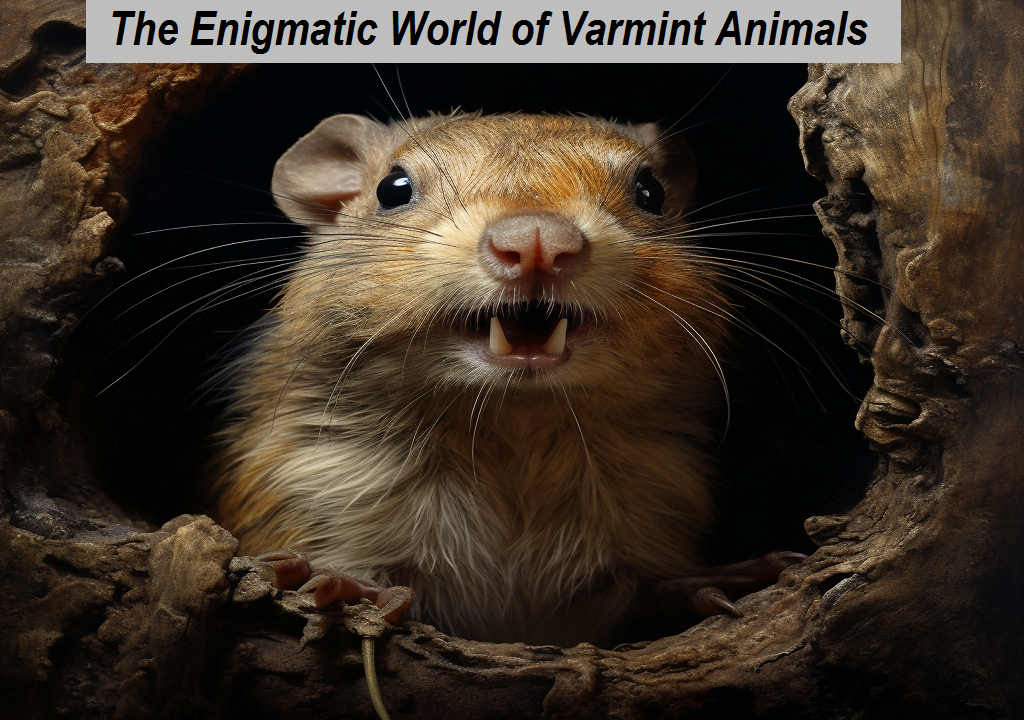The Enigmatic World of Varmint Animals

Delving into a detailed study of varmint animals, often labeled as pests, we uncover their profound and intricate roles within global ecosystems.
Table of Contents
- Table of contents
- 1. Deciphering the Varmint Enigma
- 2. Unraveling the Varmint-Human Dynamic
- 3. Spotlight on North American Varmints
- 4. A Global Odyssey of Varmints
- 5. Human Engagements: From Mythology to Modern Day
- 6. Multimedia’s Role in Shaping Varmint Perceptions
- 7. Conservation, Ethics, and the Way Forward
- Conclusion
Table of contents
1. Deciphering the Varmint Enigma
1.1. Etymology of “Varmint”
Tracing back to Old World terminologies, and then transitioning through various linguistic changes, the word has ultimately evolved into its present-day lexicon.
1.2. Taxonomic Overview
In light of this, which species are included in this category, and what is the scientific reasoning supporting it?
1.3. Cultural Variances in Classification
In examining various cultures, it becomes evident how differently each society interprets and categorizes varmints.
1.4. Evolutionary Traits of Common Varmints
Delving deeper, it’s fascinating to examine the unique evolutionary developments that these creatures exhibit.
2. Unraveling the Varmint-Human Dynamic
2.1. Historical Chronicles
In examining ancient texts, observing artworks, and delving into legends, we often come across references to varmint animals interactions with humans.
2.2. Agricultural Impacts: A Global Perspective
Initially, we’ll delve into the issue of crop losses caused by varmints. Subsequently, we’ll examine the challenges of storage issues they present. Lastly, we’ll explore the farmland degradation resulting from their activities.
2.3. Health Implications
In addition to their often pesky behavior, varmints have been documented to transmit various diseases. Consequently, it’s crucial to recognize the symptoms of these diseases. Moreover, understanding preventive measures can mitigate the risks associated with them.
2.4. Varmints and Urbanization
Moreover, grasping the complexities and subtleties of varmints living in urban areas requires a deep understanding.
3. Spotlight on North American Varmints
3.1. Prairie Dogs: The Burrowed Life
Firstly, their intricate underground cities stand out. Additionally, their social behaviors are captivating. Furthermore, their interactions with other species are noteworthy.
3.2. The Coyote Paradox
While recognizing the presence of coyotes in the wilderness, it’s crucial to also comprehend their dual role in the urban-wild interface.
3.3. Raccoons: Nighttime Bandits
Due to their uncanny intelligence, combined with their nocturnal escapades, and further highlighted by their adaptability in urban landscapes, they are truly remarkable.
3.4. The Role of Skunks
Delving beyond the infamous odor: examining their diets, exploring their habitats, and dispelling prevalent misconceptions.
4. A Global Odyssey of Varmints
4.1. Europe’s Squirrel Duality
Starting with the native reds and then transitioning to the invasive grays, this is a tale of two squirrels.
4.2. Asia’s Monkey Business: Macaques in Urban Settings
In Asian cities, while there is a deep-seated reverence, there is also a delicate balance that teeters on the brink of conflict.
4.3. Australia’s Rabbit Calamity
Consequently, when introducing a non-native species, one must consider the profound ecological implications.
4.4. African Civets: From Coffee Producers to Urban Dwellers
In examining African ecosystems, it becomes evident that civets play a multifaceted and pivotal role.
5. Human Engagements: From Mythology to Modern Day
5.1. Varmints in Mythology
Examining how ancient civilizations illustrated these creatures, it becomes evident through their myths and legends.
5.2. Varmint Management Practices
Reviewing both traditional and modern measures in handling varmint populations.
5.3. The Rise of Urban Planning with Wildlife in Consideration
In light of recent trends, modern city designs are increasingly prioritizing coexistence.
5.4. Varmint Tourism
Furthermore, destinations and experiences that focus on varmint observation and appreciation have emerged.
6. Multimedia’s Role in Shaping Varmint Perceptions
6.1. Hollywood’s Take
Through the lens of cinema, we can observe how varmints have often been either vilified or glorified over the years.
6.2. The Digital Age: Varmints Go Viral
From meme-worthy moments to viral video stars: the Internet’s favorite varmints.
6.3. Varmint Education in Augmented and Virtual Realities
Leveraging the latest advancements in technology, we can delve deeper into the world of varmints, enhancing our understanding through an immersive learning experience.
7. Conservation, Ethics, and the Way Forward
7.1. The Conservationist’s Perspective
Furthermore, it’s essential to underscore key initiatives that focus on varmint preservation.
7.2. Ethical Debates Around Varmint Control
Balancing human needs with ethical treatment of varmint animals.
7.3. The Global Shift: Rewilding and Coexistence
In light of global developments, it’s important to note how rewilding projects around the world are influencing the populations of varmint animals.
Conclusion
The path to harmonious coexistence demands a blend of understanding, respect, and innovative solutions.
FAQs
Q1. Are there any beneficial varmints in farming?
A1. Many varmints, such as certain birds, can help regulate pest populations in farms.
Q2. How can households deter varmints without causing harm?
A2. Using natural repellents, secure trash management, and habitat modifications can deter varmints safely.
Q3. Is relocation a humane solution for varmint management?
A3. Relocation can be stressful for animals and may introduce them into unfamiliar territories, potentially causing more harm.
Q4. How are climate changes influencing varmint behavior?
A4. Rising temperatures, altered rain patterns, and habitat loss are causing shifts in varmint ranges and behaviors.
Q5. Are there any global treaties or agreements on varmint conservation?
A5. While not specific to varmints, many conservation agreements address species and habitat protection, which includes varmints.







